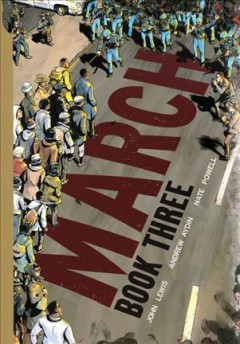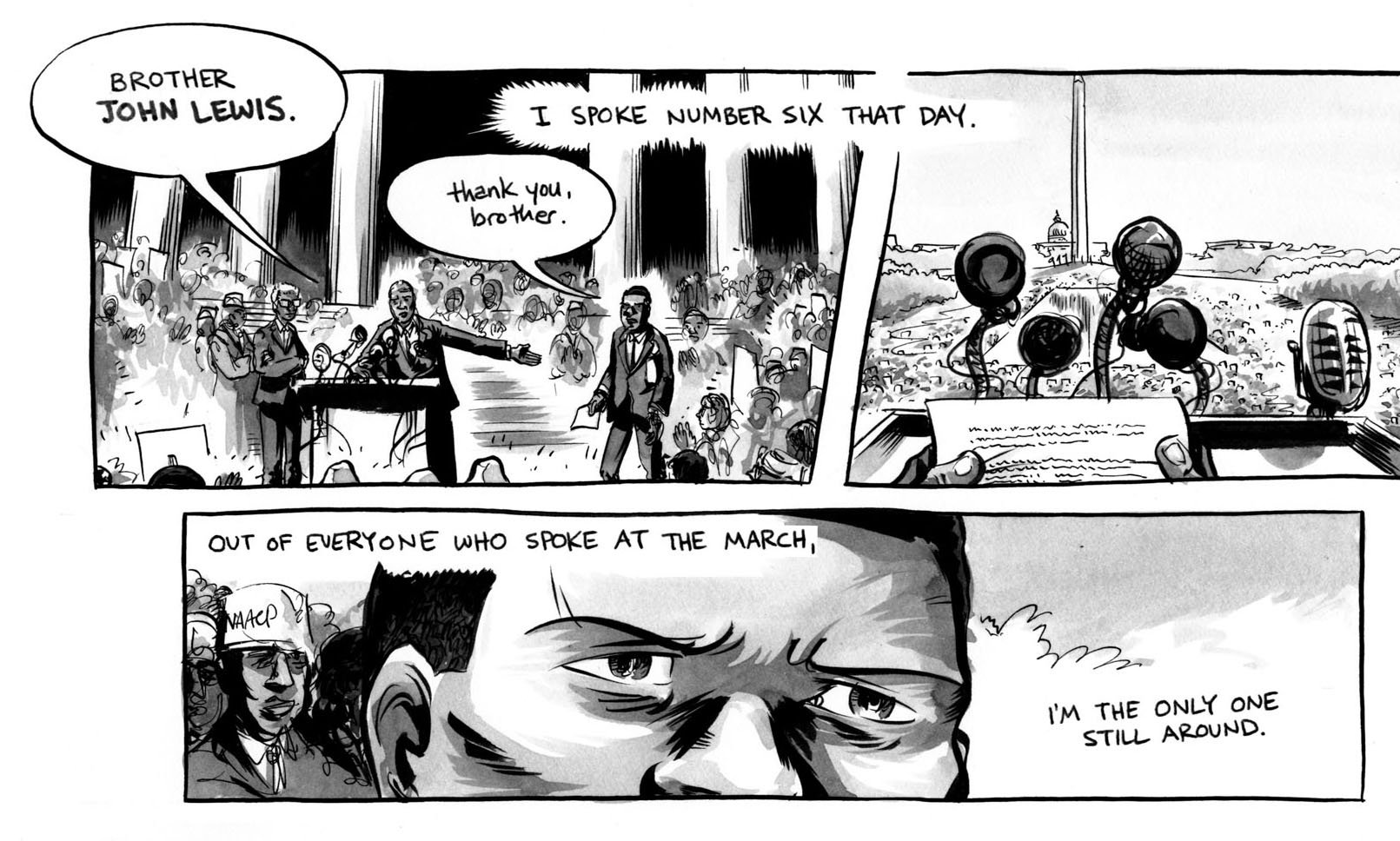The graphic novel is a strange beast. Though I’m not as well versed in them as our beloved Hunter is, I still enjoy reading them. Most of the graphic-format books I’ve read have been about superheroes: Batman, the Green Lantern Corps, Daredevil. And, in a way, March fits that bill, too, though both the hero and enemies are too real.
March is the three-part memoir of civil rights icon Senator John Lewis, co-written with his communications aide Andrew Aydin and illustrated by Nate Powell. The narrative begins on the inauguration day of President Barack Obama, but quickly jumps back in time, beginning with Lewis’ childhood in rural Alabama, where he witnessed racial inequality but was ordered (by his parents, for his safety) to stay quiet about it.  With the occasional jump back into the narrative present, March follows Lewis’ life using major civil rights events (the bombing of the 16th Street Baptist Church, the Freedom Rides, and the event alluded to in the title, the march on the Edmund Pettus Bridge).
With the occasional jump back into the narrative present, March follows Lewis’ life using major civil rights events (the bombing of the 16th Street Baptist Church, the Freedom Rides, and the event alluded to in the title, the march on the Edmund Pettus Bridge).
I won’t bore you with a summary of Lewis’ life—it’s well known in general, and well-told in March. I will, however, encourage you to buy the all three volumes for several reasons. Primarily, the story is important. Having this narrative focus on one man’s experience in a movement that affected so many is brilliant, both rhetorically and craft-wise. It takes an idea that for so many of us is an abstract notion and turns it into a story. Lewis’ story is simultaneously his own and part of something much larger than himself, and March tells both sides of this well.
 It’s also compellingly told. Lewis’ tone is conversational: it balances seriousness and grief with levity and honesty. Anyone who’s heard Senator Lewis speak knows he does so with conviction but without false airs, and March is written the same way.
It’s also compellingly told. Lewis’ tone is conversational: it balances seriousness and grief with levity and honesty. Anyone who’s heard Senator Lewis speak knows he does so with conviction but without false airs, and March is written the same way.
The quality of Lewis’ storytelling is augmented by Powell’s artwork. The black-and-white drawings are at times austere, others foreboding, but always evocative. When I tell people about the book, I often describe it as visually “gorgeous,” a term I seldom use but which is the only one that fits. Here.

March is for anyone: a reluctant reader, a fan of history, a consumer of comics, a member of the human race who wants to know more about heroism in the face of hatred. Some heroes fly; others march–over, and over, and over again.
March comes into two forms: a collected slipcase edition, and separately in volumes one, two, and three.


Comments are closed.